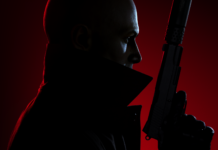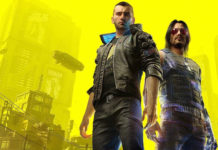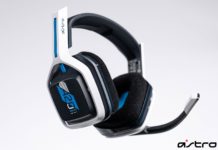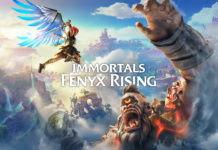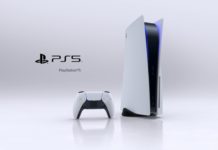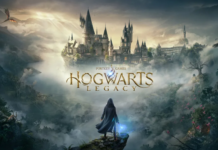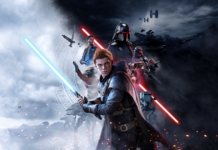Not everyone can design a game like Tetris, where players are content to do the same task over and over again. Many puzzle games start to feel like time-sinks more than rewarding experiences. For that reason, the original Puzzle Quest was brilliant. It took Bejeweled, a game that’s more like a slot machine than a puzzle game, and introduced RPG stats, abilities, and a rudimentary storyline. The result was a genre hybrid that paved the way for more engaging and rewarding games of its type.
Enter Might & Magic: Clash of Heroes, the game takes the foundation of developer Capabara’s puzzle game Critter Crunch and refines it into quite possibly the most intelligent and strategic puzzle/RPG-hybrid seen yet.
The game is set in the Might & Magic universe and tells the story of a group of children who band together to unite the various races against a common demonic foe. It’s not the most intriguing plot, but it does keep you moving from battle to battle, ultimately the real reason to play Clash of Heroes.
The game appropriately pulls from turn-based, strategy RPGs for its gameplay inspiration. Your units and your opponent’s face each other on a frontline that divides the screen horizontally. From there you take turns positioning your units on the field and color-matching them into groups of three (horizontally for defense and vertically for attacks).
As you play through the story of Anwen (an elven girl who commands an army of hunters, pixies, and bears), you’re eased into the game’s strategy. At first it’s all a bit baffling, but by the time you complete Anwen’s story and move on to the other characters, you’ll have soaked up several layers of gameplay depth.
The battle system in Clash of Heroes is surprisingly complex, with a much heavier focus on the strategy side than the puzzle-y bits. You can’t do well without clever color-matching, but you’ll spend more time thinking about how to set up a killing blow or a life-saving block. Unlike most puzzle games, which provide instant gratification, Clash of Heroes is more about the long-term. The A-Team catchphrase, “I love it when a plan comes together,” sums up this game perfectly.
Between battles, you’ll be exploring a simple world map–“simple” being the key word, as it’s not unlike navigating a Super Mario World or Donkey Kong Country hub. The game does get a lot of mileage out of the simplicity, though. You’ll find yourself hunting around for bounties, solving puzzles, and even sneaking past guards in brief stealth sections.

The problem, and one of the game’s biggest flaws, is that sections of the map are separated by oppressive loading screens. It’s not so bad at first, but by the time you have to backtrack through three or four loads to purchase some special units, you may find yourself a bit fed up.
What should be a refreshing diversion between battles can sometimes be a chore, but ignoring that trouble spot, the game does a lot to spice things up. Even during battles, Clash of Heroes introduces special conditions that can throw a wrench into your strategy.
One of these special battles, for example, tasks you with hitting two buttons on the battlefield to open a door. Some battles have you defending an object from attack or planning ahead to hit a moving target. Most of these objectives are easy and fun, giving you yet another curve ball to keep things interesting. There are a few mission runts, though, like one that introduces a moving hostage on the enemy’s battlefield. His movements are unpredictable, and a single mistake means game over, making this particular fight an exercise in trial and error.
While the more gimmicky fights can be hit or miss, one fantastic addition is the puzzle mode. Certain characters will challenge you to a friendly puzzle, which requires you to arrange your units in a single turn and defeat the enemy. This mode isn’t about the strategy, but about cleverly creating combos and cascades to extend the length of your turn. Skills developed in these puzzles feed back into the main gameplay.

By the time you’ve run through Anwen’s campaign, you’ll have experienced all of this and more. The first part alone will probably take you anywhere between four to eight hours. From there, four more campaigns continue the story with different units and abilities. Starting life as a retail release on the Nintendo DS, Clash of Heroes offers one of the more lengthy single-player modes on XBLA and PSN.
One-on-one battles, whether played locally or online, put into practice everything you’ve learned in the single-player campaign. Real-life opponents don’t hold back, and they aren’t afraid to defend themselves, either. The result is some lengthy and intense battles that will be too stressful for some and the only way to play for others.
A co-op mode rounds out the multiplayer features, pitting two teams of four against each other. It’s a great way to quickly introduce a friend to the game, but the cooperation boils down to the better player giving all the orders. It’s a fun concept, but it doesn’t seem as well-conceived as the rest of the game.

If there were one damning thing I could say about Clash of Heroes, it’s that the incessant loading and more portable-oriented gameplay make it a better proposition on DS than on consoles. It’s definitely an option to consider if you aren’t strictly a couch gamer.
For those who prefer strategy and planning over the random elements of a game like Puzzle Quest, Clash of Heroes may be the deviously clever, deliberately paced game you’ve been looking for. It can be a bit rough around the edges, but it’s also the smartest and most rewarding puzzle-RPG you’re likely to play.

